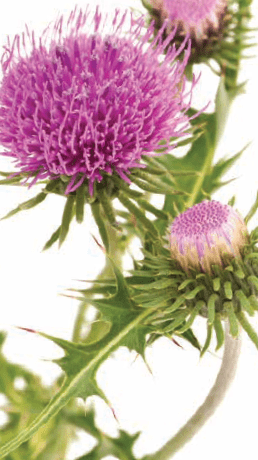 WAIT! BEFORE YOU PULL THAT ANNOYING WEED … CAN YOU EAT IT? SOME WEEDS AND WILD FLOWERS ARE EXTREMELY GOOD FOR YOU, OFFERING LOADS OF NUTRIENTS AND MEDICINAL BENEFITS.
WAIT! BEFORE YOU PULL THAT ANNOYING WEED … CAN YOU EAT IT? SOME WEEDS AND WILD FLOWERS ARE EXTREMELY GOOD FOR YOU, OFFERING LOADS OF NUTRIENTS AND MEDICINAL BENEFITS.
If your gardening gloves are wearing out from pulling pesky weeds, you probably already know weeds and wild flowers are extremely resilient plants. These rebel plants grow unrestrained and are hard to kill! They can survive long periods without water and do not require commercial fertilizers to thrive. They are found in the strangest places, sometimes powering their way through sand or cement. I once saw a lone wild sunflower growing on a sand dune at the beach. I was astonished that this one flower was thriving among the sand, standing tall and proud.
The resilience of wild plants is indeed unique, making them self-sufficient and strong members of the plant kingdom. A stronger plant is typically more nutrient-dense. Because wild plants are not watered with a garden hose on a regular basis, they have to seek water for themselves, deep within the ground; thus, their roots run deep and spread further than conventionally grown plants. What I find most astounding about wild plants is no human has to plant them; Nature does the work. And, because Nature is doing the planting, it’s dutifully growing plants that are beneficial for you in each season.
So, what are some of the best edible weeds and wild flowers? Here are a few of my favorites:
Milk Thistle:
Milk thistle is a prickly plant with a purple flower, often found in cow pastures. All of the parts above the ground are edible (seeds, stem, flower, and leaves). The stalk is similar in texture and taste to that of celery. You should wear gloves to pick this prickly weed. Milk thistle is most commonly used for its powerful ability to repair the liver. In fact, some individuals taking medications that could cause harm to the liver often use milk thistle to counteract the effects. It’s also been shown to increase the production of breast milk. Many women drink milk thistle tea when breastfeeding.
Dandelion:
Dandelion is a small yellow flower. All parts of the plant are edible, right down to the root. It has vast health benefits. It contains beta carotene, vitamins C, B-complex, and D, and minerals potassium, iron, calcium, zinc, phosphorus, sodium, and magnesium. It is also a good source of fiber and plant protein. Dandelion has been used to treat the skin and blood. It’s a natural diuretic and digestive aid. Many use it for liver and kidney support, or to treat depression. Studies have also shown dandelion to effectively reduce blood pressure and cholesterol.
Purple violets:
The leaves and flower of this plant are both edible and tasty. Chop it up and toss it in a salad and enjoy all the detoxification benefits it has to offer. Purple violet avidly stimulates the lymphatic glands, which can help rid the body of toxic materials. Its antiinflammatory properties help ease skin conditions like eczema, acne, and psoriasis, and other inflammations like sinusitis and bronchitis. It also functions as a blood purifier, helping cleanse your overall system.
 Echinacea:
Echinacea:
When I feel a cold coming on, I always reach for echinacea. The purple flower and leaves of this medicinal plant are both edible and useful. Echinacea is most widely used for its infection-fighting abilities. It will effectively reduce cold and flu symptoms. It will treat urinary tract infections, vaginal yeast infections, infections in the bloodstream, gum disease, and tonsillitis.
Purslane:
Purslane has red stems and green leaves. The flowers are a bright yellow. This weed is touted as a culinary delight, both succulent and tasty. But it doesn’t just taste good, it’s good for you! It is especially beneficial for vegetarians and vegans as a non-animal source for omega-3 fatty acids (alpha-linolenic acid). In fact, it’s deemed as having the highest omega content among plants. Omega- 3s are excellent for maintaining a healthy heart and reducing inflammation in the body. Purslane also contains vitamin A, C and B, and magnesium, calcium, phosphorus, potassium and iron, truly a mineral-rich weed.
Edible weeds can be extremely beneficial to human health, acting as cleansers, defenders, and protectors of vital organs in the body. The benefits of these wonderful weeds are just too many to pass by. You can find these weeds commercially in many forms such as juices, teas, tinctures, and capsules, or take advantage of these wild and free plants by harvesting them yourself. You can plant them in your back yard or find them in their natural habitat by foraging for them. But, before you forage, it’s highly recommended that you educate yourself, as some plants are not edible and may even be poisonous. Helpful websites like ediblewildfood.com can help you identify plants and learn how to use them. You may even be able to find a foraging class in your city. These classes can be a fun, educational, and healthy walk through the woods.






